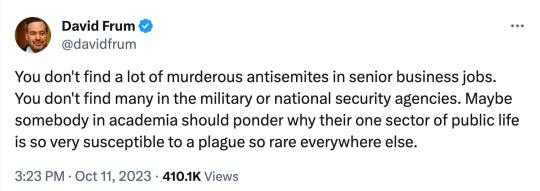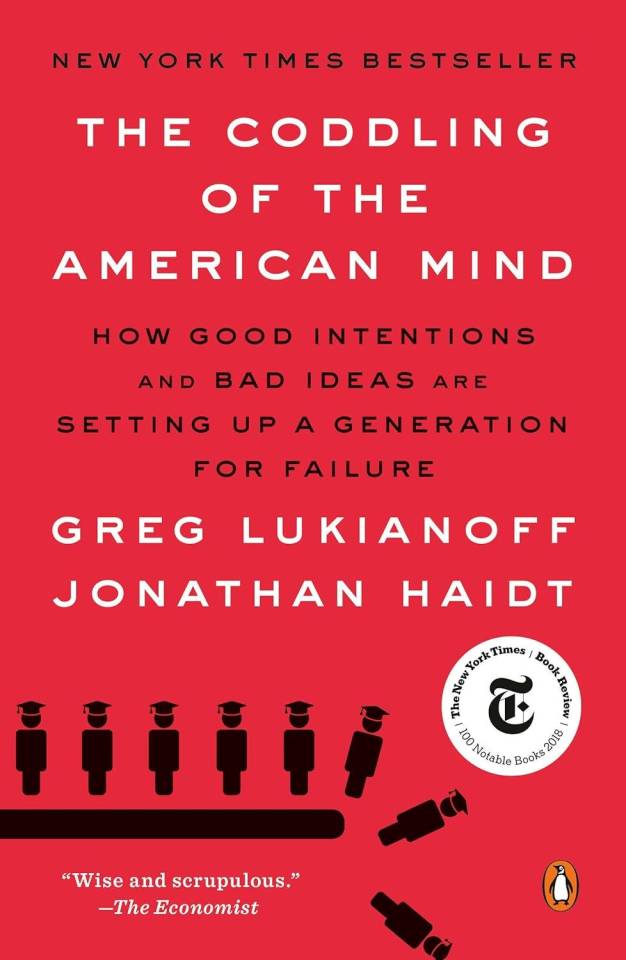#dualism
Explore tagged Tumblr posts
Text

Mark Z. Danielewski, House of Leaves
#mark z. danielewski#house of leaves#dark academia#litblr#literature#quotes#literary quotes#lit#bookblr#god#dualism
95 notes
·
View notes
Quote
Male/female, white/black, good/evil, civilized/primitive, culture/nature, self/other, literature/paraliterature, mind/body, conscious/unconscious, subject/object, presence/absence, voice/writing, artist/critic, sanity/madness — these seeming conceptually egalitarian oppositions that cover vast socially exploited hierarchies are, themselves, a theme; perhaps, till fairly recently, they were the great theme of the West.
Samuel R. Delany, "Neither the First Word nor the Last on Deconstruction..."
#categories#distinctions#words#language#dualism#duality#hierarchy#quotes#Delany#Samuel R. Delany#Neither the First Word nor the Last on Deconstruction...
98 notes
·
View notes
Note
A doctor recently told one of my friends that the persistent, painful muscle aches they’ve been having were “just” a result of stress. I remembered that in Akira, the doctor Jake saw prescribed him a short-term “mild tranquilizer” for stress— is that a real option, or something fic doctors came up with for traumatized morphers?
First: I am not a doctor, so everything I put in my fics is a) based on widely available sources, or b) sci fi nonsense.
Second: FUCK western dualism. The idea of the body and the mind as separate, and the mind as somehow “less real,” is unscientific and dogmatic and complete fucking bullshit. There’s an article I need to find again that breaks out all the reasons that doctors dearly love to put medical occurrences they can’t explain in the bucket of “”just” stress” — it protects the doctor’s sense of self through suggesting that anything that can’t be detected in a blood test isn’t real, it requires no follow-up because now it’s someone else’s problem, it suggests that all medical problems are under the patient’s control. Double your odds of this diagnosis if you’re female, triple them if you’re fat, and only halve them if you’re Black because now you’re being classified as a “drug seeker” instead.
Third: Note how often physicians and gastroenterologist and urologists and dermatologists go “reduce stress” and then offer NOTHING WHATSOEVER that will result in actual stress reduction. Oh gee, doc, that’s great you think I should reduce stress. You going to prescribe me $200,000 a year so I can quit my job and stop staying up late worrying about my water bill? You going to set me up with free child care for enough hours a week that I can actually get some sleep and a hot meal or two? You going to assassinate the guy who wakes up every morning to tell the world that I’m not a human being and he’s going to stamp me out? No? So by “reduce stress” you meant “take this pamphlet on mindfulness meditation and go away”? Thank god I paid $150 and waited 3 hours for this. I’ve never actually screamed “I’m a psychologist and you’re not, you stupid gastroenterologist” at a stranger, but the temptation is real.
Fourth: Rant aside, there are plenty of instances of non-psychiatrists giving people a few doses of a benzodiazepine or sleep aid for conditions exacerbated by stress. Obviously there are good reasons to avoid doing that with especially benzos if at all possible — that’s the shit that killed Michael Jackson and Heath Ledger — but stress has the ability to worsen basically any medical condition ever discovered, so even a temporary chemical solution to stress is usually better than nothing. Incidentally, this is part of the reason that ACT UP pushed for legalization of marijuana, because maybe cannabis can’t treat AIDS, but it really can cause AIDS to kill you slower through reducing stress and increasing appetite.
#nothing to do with animorphs#medical bullshit#dualism#western medicine#medicalization#health insurance#u.s. health care
77 notes
·
View notes
Text

Dualism
Two essences intertwine amidst the radiance of petals and veiled shadows.
#dualism#contemporary art#illustrations#flowers#metamorphosis#art gallery#digital art#artists on tumblr#nature#art#beauty#woman#art nouveau#art decò#wall art#poster art#dark art#macabre#creepy art#creepy aesthetic#surreal#symbiosis#metamorphic#artwork#original art#drawing#digital painting#italian art#dark mood#ninfee
115 notes
·
View notes
Text

#ai#artificial intelligence#machines#ghost in the machine#eggplant#dualism#van gogh#art#fine art#wronghands#john atkinson#webcomic#humor
34 notes
·
View notes
Text

Is Your Mind Real?
Is your mind "real" in the same sense as a table is "real"?
In the philosophy of mind, materialism is the belief that reality consists of nothing more than interactions between material things like atoms. Physical reality is all there is. That goes for the mind as well, which (if it exists at all) is believed to be generated by the brain. (Materialism's main rival, dualism, is the belief that the mind and brain have independent existence. )
Materialism has been around since the scientific revolution began in the 1600s. Classical materialism was based on the ideas of Newtonian physics and envisioned a clockwork "billiard ball" universe in which:
The same physical laws apply at all measurement scales (micro to macro);
Reality is deterministic and predictable;
Reality is objective, in the sense that it exists independently of any observer;
Everything in existence can be reduced to the interactions between atoms; and
Space and time are absolute, linear, and distinctly separate dimensions.
All of these classical premises have been undermined by modern physics, but materialism has been updated to get around these difficulties, as we shall see.

Physicalism
Physicalism is the view that the world consists of the things that physics says it contains (Ney 2008). But which physics are we talking about? If it's our current understanding of physics, then physicalism is plainly wrong since our current physical understanding is likely to be deprecated by new physical theories just as classical materialism was deprecated by relativity and quantum physics.
Maybe we can couple physicalism to some future, final, and completely accurate version of physics. You've probably heard this claim before: We may not know all of the answers yet, but we'll eventually figure them out. (Karl Popper derisively termed this approach "promissory materialism".) The problem here is that we have no idea what a future physics might entail. Maybe physics will discover that the mind isn't generated by the brain, but is instead a nonlocal phenomenon. In that case, it will be dualism rather than materialism that can claim the imprimatur of a future physics.
But setting that objection aside, who gets to decide "what physics says"? Physics is not monolithic and there are many areas where agreement is by no means universal. For example, relativity and quantum physics have stubbornly resisted a century of efforts to unify them. They each make correct predictions in their own domain, but they don't mesh with each other.
Finally, value-laden concepts like aesthetics and ethics are quite difficult to reduce to the interactions of atoms. That kind of transformation is one-to-many (homomorphic) rather than one-to-one (isomorphic) with important implications:
Under a homomorphism we lose information and cannot preserve the property of whether an underlying system is deterministic or stochastic. This is a major blow to physicalism from the perspective of free will and the philosophy of mind.
Under a homomorphism we cannot conclude anything about what another observer would see when they view "the same" system. In other words, the sort of reductionism that physicalism demands makes objective reality impossible even in principle.
So physicalism is a slippery and difficult form of materialism to defend. It doesn't explain the mind, it simply explains it away.

Scientific Naturalism
Well, if tight coupling to physics didn't work, maybe we should loosen that coupling and try it again. Perhaps reality arises from natural material phenomena in a holistic way, with physics lurking around somewhere at the bottom of it. This scientific naturalism: nothing mental can happen without a corresponding change in a physical object. The philosophical term for this is supervenience, as in "all mental processes supervene on purely physical processes in the brain."
Of course, 'natural' is the biggest weasel word in philosophy, and has been ever since Rousseau. Here it is used to gatekeep the supernatural, which is the entire point of materialism anyway. But how do we know that the phenomena currently termed as supernatural (e.g., near-death experiences, terminal lucidity, children's memories of past lives) aren't precisely the kinds of discrepant edge cases that lead to new theories and scientific revolutions? This is the "future physics" problem all over again. Indeed, one prominent philosopher of mind, David Chalmers, is confident enough in such a possibility that he describes himself as both a naturalist and a dualist - thereby severing the link between scientific naturalism and materialism.
So once again, materialism fails.

Plato's Cave
From a systems philosophy perspective, let us postulate that the physical universe is an operationally closed system, by which I mean all of its causal processes are endogenous to that system (they are self-contained within the physical universe) and it contains no exogenous variables (i.e., no Platonic 'givens' that originate from outside the physical universe.) This is materialism at its most abstract, the metaphysical equivalent to 'what happens in Vegas stays in Vegas.'
The biological sciences are closed because they depend on the physical sciences. The physical sciences are closed because they depend on mathematics.
But mathematics is not operationally closed.
As Tarski's Undefinability Theorem has shown, arithmetical truth cannot be defined in arithmetic; and (more generally) for any sufficiently strong formal system, truth cannot be defined within that system.
Therefore, truth is an exogenous variable.
Therefore, the physical universe cannot be operationally closed.
Therefore, materialism fails.
Materialism fails because truth cannot be reduced to interactions between atoms. Since truth is a value, it also follows that at least some values are exogenous to the physical universe.
This difficulty cannot be removed by appealing to a multiverse like the Many Worlds Interpretation of quantum physics, since the system boundary can be drawn arbitrarily large without invalidating the syllogism.
So Plato has the last laugh.

In Conclusion
"The intuitive and common-sense feel of materialism seems to last only as long as as one keeps one's statement of it vague."
Edward Feser, Philosophy of Mind: A Short Introduction, pg. 45
Materialism needs science. Science does not need materialism. In fact, to the extent that materialists remain temperamentally opposed to accepting the validity of so-called "supernatural" phenomena like near-death experiences, terminal lucidity, and children's memories of past lives they are actively blocking scientific progress.
Materialism is a "theory of everything" and as such it is brittle to any evidence that the mind is nonlocal to the brain. But there is empirical evidence that the mind can exist independent of the brain, and even survive the death of its host before being reborn in a new host. Over the next few days I will be posting empirical evidence in support of that hypothesis before concluding this series with a grounded dualist theory of the mind.
#consciousness#philosophy of mind#materialism and its discontents#tarski's undefinability theorem#near death experiences#terminal lucidity#children's memories of past lives#physicalism#scientific naturalism#platonism#philosophy of mathematics#dualism#scientism
14 notes
·
View notes
Text

Rūha: the Queen of Darkness.
" Rūha is the Arch-demoness, the Queen of Darkness. She is the daughter of “Qin” the Mistress of Darkness. She is the ruler of the third matarta (watch-house), and dwells in first underworld. Rūha is the mother of the King of Darkness, 'Ur, and the mother of the Seven planets, the Twelve Signs of the Zodiac and the Five planets. She is considered as a kind of "fallen wisdom figure” ressembling Sophia in other Gnostic traditions. She fights and suffers and appears in several realms at the same time. Rūha is the leader of the underworld forces and the “entity incorporation powers of darkness which the lightworld had to conquer.”
In Book VI of the Ginza Rba (the book of “Dinanukt") Rūha describes herself as “light and darkness”, “error and truth ”, “destruction and structure” etc., in clear dualist terms. "
[source: The Story of Creation in the Mandaean Holy Book the Ginza Rba - Sabah A ldihisi]
#ruha#rūha#mandaean#mandaeanism#demoness#archdemoness#darkness#worldofdarkness#unvolk#sinisterfeminine#darkgoddess#sophia#fallensophia#ginzarba#queenofdarkness#gnostic#gnosticism#acausal#sinister#sevenplanets#twelvesigns#zodiac#planets#astrology#sinisterastrology#underworld#dualism
11 notes
·
View notes
Text

Baphomet (Dark/Gold Edition) by Florian Bertmer (2008)
Source: https://www.pinterest.com/pin/121878733652366544/ https://dogstreets.com/artwork/Florian%20Bertmer/Baphomet%2008/17979
48 notes
·
View notes
Text

Angela Lane, "Dualism #2", 2021, oil on birch plywood, b. 1974 UK. Artist based in Raumati, New Zealand.
#Angela Lane#Dualism#2#2021#uk artist#oil on birch plywood#oil painting#painting#art#pink aesthetic#surreal#landscape#black#sun
17 notes
·
View notes
Text
By: Jonathan Haidt
Published: Dec 22, 2023
[Note: this is post #1 of a pair of posts. The second post gives the text of chapter 3 of The Coddling of the American Mind.]
In the days after the October 7 Hamas attack on Israel, university campuses immediately distinguished themselves as places set apart from the rest of American society—zones where different moral rules applied. Even before Israel began its military response, the loudest voices on campus were not university leaders condemning the attacks and vowing solidarity with their Jewish and Israeli students. Instead, the world saw faculty members and student organizations celebrating the attacks.
Political commentator and Atlantic author David Frum summed up the moral uniqueness of the academy in this tweet, four days after the attack:

Since then, there have been hundreds of antisemitic incidents on campuses including vandalism of Jewish sites, physical intimidation, physical assault, and death threats against Jewish students, often from other students. The response from university administrators has often been slow, weak, or entirely absent.

[ Image. The scene on the exterior wall of my office building at NYU on the morning of October 17, 2023. NYU students had posted fliers about Israelis kidnapped by Hamas. Other NYU students tore them down. Other NYU students posted more of them. ]
Why is the culture of elite higher education so fertile for antisemitism, and why are our defenses against it so weak? Don’t we have the world's most advanced academic concepts and bureaucratic innovations for identifying hatred of all kinds, even expressions of hatred so small, veiled, and unconscious that we call them “micro-aggressions” and “implicit biases”?
Yes, we do, but it turns out that they don’t apply when Jews are the targets,1 and this was the shocking hypocrisy on display in that Congressional hearing room on December 5. Congresswoman Elise Stefanik asked the President of the University of Pennsylvania “Does calling for the genocide of Jews violate Penn's rules or code of conduct, yes or no?” President Magill was unable to say yes. When the question was asked in various ways to all three presidents, none could say yes. All said variations of “it depends on the context.”
Now, as a social psychologist who studies moral judgment, I’m all for context. Technically, those presidents were correct that students chanting “from the river to the sea” may or may not be advocating killing all the Jews in Israel. Those chanting “globalize the intifada” may or may not be calling for terrorist attacks on Jewish sites around the world. And even if they were, such political speech is protected by the First Amendment unless the speech is made in a context that is likely to incite actual violence, constitutes a “true threat,” or rises to the level of discriminatory harassment. Those three presidents could have said that their universities are bastions of free speech where everyone lives and dies by the First Amendment.
In fact, they tried to say that, and this is why they were so widely pilloried for hypocrisy. Like most elite schools, Harvard, Penn, and MIT have spent the last ten years punishing professors for their research findings and disinviting speakers who questioned the value of DEI. (See The Canceling of the American Mind for dozens of other examples.) As has been widely reported, Harvard and Penn are the top two schools in America for creating terrible speech climates, according to the Foundation for Individual Rights and Expression.
What on earth happened to the academy? As Fareed Zakaria recently asked: How did America’s elite universities go from being “the kinds of assets the world looks at with admiration and envy” just eight years ago, to becoming objects of ridicule today? How did we bungle things so badly?
Greg Lukianoff and I wrote a book that tried to answer that question in 2018, as it was happening.

The Coddling of the American Mind tells the story of how American universities lost their collective minds, beginning around 2014 when student demands for protections from speech seemed to appear out of nowhere, including calls for trigger warnings, safe spaces, bias response teams, and mandatory trainings around language use. The students were supported by some faculty members and some administrators, and their combined force pressured many university leaders to accede to their demands even though, privately, many had misgivings.2
The new morality driving these reforms was antithetical to the traditional virtues of academic life: truthfulness, free inquiry, persuasion via reasoned argument, equal opportunity, judgment by merit, and the pursuit of excellence. A subset of students had learned this new morality in some of their courses, which trained them to view everyone as either an oppressor or a victim. Students were taught to use identity as the primary lens through which everything is to be understood, not just in their coursework but in their personal and political lives. When students are taught to use a single lens for everything, we noted, their education is harming them, rather than improving their ability to think critically.
This new morality, we argued, is what drove universities off a cliff. For a while, the descent was gradual, but at Halloween, 2015, in a courtyard at Yale, the free fall began. Students and administrators espousing the new morality demanded reforms at Yale and, over the next few months, at dozens of other schools. With a few exceptions, university leaders did not stand up to the new morality, critique its intellectual shortcomings, or say no to demands and ultimatums.
You can see the fall of higher ed in data from Gallup. The figure below shows that as recently as 2015, most Democrats and even most Republicans had high confidence in higher education as an institution. (Independents were evenly split). A mere eight years later, higher ed had alienated not just Republicans, but also independents. The trend for Democrats was down as well. The survey was fielded in June of 2023, well before the current mess.

[ Figure 1. Percent of U.S. adults with "a great deal" or "quite a lot" of confidence in higher education. Source: Gallup (2023). ]
The good news is that the academy’s free fall is now over. American higher ed hit rock bottom on December 5, 2023 in that Congressional hearing room. Anyone who wants universities to bounce back and regain the trust of the American people must understand this new morality and ensure that it never holds sway on campus again.
The key chapter for understanding the new morality is chapter 3. I recently re-read that chapter and thought it would be of help to those who are struggling to comprehend the enormity of the culture change on so many campuses since 2015. Greg and I explained the transformation as the triumph of a cognitive distortion—binary thinking—such that students learn to slot everyone into one of two boxes: oppressor or victim.3 This mindset is the psychological basis of one of the three “Great Untruths” that we found flourishing on college campuses in the 2010s: Life is a battle between good people and evil people.4 We said that this was a terrible thing to teach students, and we explained why we expected that students who embraced this untruth would damage their mental health. (Subsequent research has confirmed this prediction.)
The central portion of the chapter describes two different kinds of identity politics, one of which is good because it actually achieves what it says it is trying to achieve, and because it brings both justice and, eventually, better relationships within the group. We called this “common humanity identity politics.” It’s what Martin Luther King, Jr., and Nelson Mandela did by humanizing their opponents and drawing larger circles that appealed to shared histories and identities. The other form we called “common enemy identity politics.” It teaches students to develop the oppressor/victim mindset and then change their societies by uniting disparate constituencies against a specific group of oppressors. This mindset spreads easily and rapidly because human minds evolved for tribalism. The mindset is hyper-activated on social media platforms that reward simple, moralistic, and sensational content with rapid sharing and high visibility.5 This mindset has long been evident in antisemitism emanating from the far right. In recent years it is increasingly driving antisemitism on the left, too.
Common enemy identity politics is arguably the worst way of thinking one could possibly teach to young people in a multi-ethnic democracy such as the United States. It is, of course, the ideological drive behind most genocides. On a more mundane level, it can in theory be used to create group cohesion on teams and in organizations, and yet the current academic version of it plunges organizations into eternal conflict and dysfunction. As long as this way of thinking is taught anywhere on campus, identity-based hatred will find fertile ground.
With permission from Penguin Press, Greg and I present a condensed version of chapter 3 in a linked post, here:
What is the victim-oppressor mindset and how did it conquer the academy?
Please do go read that post, and then come back here.
OK, if you don’t want to do that right now, here is the ending of the excerpt, which offers a partial summary. After describing the social psychology of tribalism and ideas about power (from Marx, Marcuse, Foucault, and Crenshaw), we analyze an intersectionalist text in which the author (Kathryn Pauly Morgan) asserted that because men created educational systems, girls and women in those systems today are essentially a “colonized population.” Here is our response:
Morgan is certainly right that it was mostly white males who set up the educational system and founded nearly all the universities in the United States. Most of those schools once excluded women and people of color. But does that mean that women and people of color should think of themselves as “colonized populations” today? Would doing so empower them, or would it encourage an external locus of control? Would it make them more or less likely to engage with their teachers and readings, work hard, and benefit from their time in school? More generally, what will happen to the thinking of students who are trained to see everything in terms of intersecting bipolar axes where one end of each axis is marked “privilege” and the other is “oppression”? Since “privilege” is defined as the “power to dominate” and cause “oppression,” these axes are inherently moral dimensions. The people on top are bad, and the people down below are good. This sort of teaching seems likely to encode the Untruth of Us Versus Them directly into students’ cognitive schemas: Life is a battle between good people and evil people. Furthermore, there is no escaping the conclusion as to who the evil people are. The main axes of oppression usually point to one intersectional address: straight white males. [...] In short, as a result of our long evolution for tribal competition, the human mind readily does binary, us-versus-them thinking. If we want to create welcoming, inclusive communities, we should be doing everything we can to turn down the tribalism and turn up the sense of common humanity. Instead, some theoretical approaches used in universities today may be hyper-activating our ancient tribal tendencies, even if that was not the intention of the professor. Of course, some individuals truly are racist, sexist, and homophobic, and some institutions are too, even when the people who run them mean well, if they end up being less welcoming to members of some groups. We favor teaching students to recognize a variety of kinds of bigotry and bias as an essential step toward reducing them. Intersectionality can be taught skillfully, as Crenshaw does in her TED Talk. It can be used to promote compassion and reveal injustices not previously seen. Yet somehow, many college students today seem to be adopting a different version of intersectional thinking and are embracing the Untruth of Us Versus Them.
So, how well does our analysis from 2018 hold up in 2023? Does chapter 3 help us to understand the recent explosion of antisemitism on campus?
Unfortunately, the analysis works perfectly. Many students today talk about Israel as a “settler-colonialist” nation.6 That is straight oppressor/victim terminology, from post-colonialist thinker Frantz Fanon. It treats Israel as if diaspora Jews were 19th century England or France sending colonists to take over an existing society, motivated by monetary greed. Once that frame is applied, students’ minds are closed to any other understanding of a complicated situation, such as the view that Jews are the original (or indigenous) inhabitants of the land, who had a continual presence there for 3,000 years, and whose exiled populations (many in Arab lands) had nowhere else to go after being decimated by Hitler’s version of common enemy identity politics.7 The French in Algeria could return to France, but if these students get their wish and Hamas gains control of all the territory “from the river to the sea,” it’s not clear where seven million Jews would go, other than into the sea.8

[ Image. Pro-Palestinian supporters march after a rally in New York City, October 9, 2023. Photo by Lev Radin, Shutterstock. ]
Direct evidence of the link between the oppressor/victim mindset and antisemitism was published last week in a poll from Harvard’s Center for American Political Studies and the Harris Poll. The survey was fielded on December 13-14.9 The survey asks about Americans’ beliefs not just about Israel but about Jews in America and on campus as well. I’ll summarize a few of the items, which you can check out in the report, and I'll expand on three in particular, which document the wide reach of the oppressor/victim mindset and its role in causing young people to embrace antisemitism.10
The Harvard-Harris survey found that Americans side strongly with Israel against Hamas in the current conflict––except for Gen Z (here operationalized as the 18-24-year-old age bracket)11, which is evenly divided between support for Israel and Hamas. (See p. 47 of the report.)
I should note that some have rightly criticized the Harvard-Harris poll on methodological grounds, especially for forcing respondents into binary choices, rather than offering a “don’t know” or “undecided” option. When such options are offered many people choose them, sometimes more than half, so the numbers you’ll see below probably overstate the prevalence of antisemitism, in absolute terms. Zach Rausch and I have been collecting all the recent surveys we can find on attitudes toward the Gaza conflict in this Google doc. Many other surveys have confirmed that there is substantially more support for Hamas among Gen Z than among older generations, although some studies find that Gen Z still tilts slightly toward Israel. It is the pattern of responses across questions and generations that I am drawing on, rather than the absolute numbers.
The survey found that Gen Z is not much different than older generations in agreeing that 1. Antisemitism is prevalent on campus (p. 50), 2. Jewish students are facing harassment on campus (p. 50), 3. Calls for “the genocide of Jews” are hate speech (p. 51), and 4. Calls for “the genocide of Jews” are harassment (p. 52).
Yet, despite agreeing with other generations that antisemitism is prevalent on campus, that Jews are being harassed on campus, and that calls for genocide are both hate speech and harassment, Gen Z is evenly divided as to whether campus protesters have a right to call for genocide against Jews. You can see the exact question below the table in Figure 2. As you can see below, all older generations favor disciplinary action as the proper response to students who publicly call for the mass killing of Jews. Only Gen Z does not.

[ Figure 2. “If a student calls for the genocide of Jews should that student be told that they are free to call for genocide or should such students face actions for violating university rules?” Harvard-Harris Poll, December 2023, screenshot from p. 51, with additional annotations by Haidt. ]
Why is Gen Z so tolerant of hate speech and verbal harassment of Jews, when it shows the lowest tolerance for such speech against other groups? The next three items show that the oppressor/victim mindset and common enemy identity politics are at work, but only for Gen Z. One item asked “Do you think that identity politics based on race has come to dominate at our elite universities, or do they operate primarily on the basis of merit and accomplishments without regard to race?” (p. 55). All generations agree that identity politics based on race is now dominant, but Gen Z, which has the most experience with current campus culture, agrees more strongly (69%, tied with those over 65).
The big difference between generations is that only Gen Z endorses this kind of identity politics. One survey item asks: “There is an ideology that white people are oppressors and nonwhite people and people of certain groups have been oppressed and as a result should be favored today at universities and for employment. Do you support or oppose this ideology?” [p. 56]

[ Figure 3. “There is an ideology that white people are oppressors and nonwhite people and people of certain groups have been oppressed and as a result should be favored today at universities and for employment. Do you support or oppose this ideology?” Harvard-Harris Poll, December 2023. ]
Gen Z, and only Gen Z, agrees with the “ideology that white people are oppressors.” The direct line linking this explicit form of common enemy identity politics to antisemitism is found in the responses to the next item: “Do you think that Jews as a class are oppressors and should be treated as oppressors or is that a false ideology?”

[ Figure 4. “Do you think that Jews as a class are oppressors and should be treated as oppressors or is that a false ideology?” Harvard-Harris Poll, December 2023. ]
Gen Z, and only Gen Z, agrees. As I said earlier, the absolute numbers would be lower if a neutral or “don’t know” option were presented, so I do not believe that two out of every three Americans in that age range truly believes that Jews are oppressors. But even if half of the respondents chose a third option, the balance of those who believe it to those who reject it would still tilt toward “oppressors,” and more strongly than for any older generation.
In other words: While all generations agree that race-based identity politics now dominates on campus, only Gen Z leans toward (rather than away from ) endorsing such politics, applying it to Jews, and agreeing that we should treat Jews as oppressors—that is, treat them badly and not protect them from hate and harassment because they deserve what’s coming to them.
I should offer a few clarifications.
First, it is understandable that there is an age gradient, with older generations strongly pro-Israel and younger generations becoming increasingly supportive of the Palestinian cause. Older generations were raised by parents who remembered the Holocaust and understood the context within which the state of Israel was created. Older generations remember the frequent attacks on a vulnerable Israel in its early years. Younger generations, in contrast, have only known a strong Israel that occupied Palestinian territory (at least in the West Bank). There are two sides on this issue. I’m on one side, but I understand that there are good reasons for taking the other side. Opposing Israel or hating the Israeli government is not automatically anti-semitism. What concerns me is that anti-Israel sentiment seems to be increasingly closely linked to hatred of Jews and physical attacks on Jews and Jewish sites. Such attacks may seem morally justified, even virtuous, to those who believe that Jews are “oppressors.”
Second, the Israeli military response has not been “surgical”; its bombing campaign has killed thousands of Palestinians who are not members of Hamas. Young people, most of whom are on TikTok, are probably more exposed than older people to videos of horrific suffering among Gazans. So again, I don’t criticize anyone for protesting Israel or the war, and I hope that universities respect pro-Palestinian students’ First Amendment rights to speak and protest. But the displays of support for Hamas began even before Israel had responded, and part of what was so shocking in the first week after the October 7 attack was the relatively muted and delayed expressions of concern by university leaders and campus organizations. Whatever has caused today’s campus antisemitism, it was already baked in before Israel’s military response began.
Third, I cannot say how much of today’s antisemitism comes from college classrooms (and K-12 classrooms as well), and how much is driven by social media, particularly TikTok. The rapid transition to the “phone-based childhood” that happened around 2012 is a crucial part of the story, which Greg and I discussed in The Coddling. As I have argued elsewhere, social media has introduced dangerous new dynamics into society, including explosive virality and the fragmentation of shared understandings (i.e., the collapse of the Tower of Babel). But given that today’s campus antisemitism is so closely linked with the oppressor/victim mindset, and given that Greg and I (and many others) have been warning about the dangers of teaching this mindset since before TikTok was created, I am confident that American higher education bears a substantial portion of the blame.
I do not believe that those three presidents, testifying before Congress, were antisemitic in their hearts. But in their heartless and gutless responses to a question about when it violates their campus’s rules for students to call for genocide against Jews, all three presidents validated the now-prevalent campus antisemitism. All three presidents essentially said: Jews don’t count, it’s OK to call for their deaths, as long as it does not “turn into action.”
According to those who embrace common enemy identity politics and its oppressor/victim mindset, all members of victim groups are justified in “punching up,” pulling oppressors down, vandalizing their buildings and symbols, and perhaps even raping their women and killing their children. At least, that is the implication of tweets from various professors who praised the Hamas attack, saying versions of “this is what decolonization looks like.”
Conclusion
In the tweet I quoted at the top of this essay, David Frum pointed out that elite college campuses have diverged from the rest of the country. Frum urged those of us in the academy to reflect upon why college campuses are so rife with antisemitism, in a country that is, according to public opinion data, very positive toward its Jewish citizens. I have tried to do that in this essay, concluding that it is our own fault for embracing and institutionalizing bad ideas, rather than challenging them. I have shown a direct connection between the oppressor/victim mindset and the willingness of many in the current generation of students to espouse overtly antisemitic beliefs (even if it is not truly a majority of them).
American higher education is now in a code-red situation. It’s not just Jewish donors and alumni who are withdrawing their support. As you saw in Figure 1, a majority of Americans had low confidence in higher ed before October 7. In the wake of the December 5 congressional hearings, it is now surely a supermajority, including perhaps most Democrats as well. Efforts in red-state legislatures to constrain, control, or defund higher ed will now find a great deal more public support than anyone could have imagined before 2015.
If they are to regain public trust, university leaders will need to understand the victim/oppressor mindset and how their own institutions are encouraging it. Then they will need to take bold action and make deep changes. You can’t just plant a new center for the study of antisemitism in soil that is ideal for the growth of antisemitism. You have to change the soil, change the culture and policies of the institution.
Greg and I have an entire chapter (13) on how to do that, how to create “wiser universities” by enshrining free inquiry, changing the standards used to hire faculty and admit students, and then orienting students for productive disagreement. A wiser university would make students less susceptible to the oppressor/victim mindset even if they are exposed to it in a few of their classes. I will offer many more ideas in future posts. For now, I list organizations that specialize in improving the culture of universities, and I list essays that offer what I think are good ideas. I’ll keep the list updated for a while, so if you find good essays, please post links to them in the comments.
I close this essay with the quotation that opens Chapter 3 of The Coddling, from Rabbi Jonathan Sacks, one of the wisest people I’ve ever had the good fortune to meet:
There is the moral dualism that sees good and evil as instincts within us between which we must choose. But there is also what I will call pathological dualism that sees humanity itself as radically... divided into the unimpeachably good and the irredeemably bad. You are either one or the other.
Universities can and must free students from pathological dualism.
#Jonathan Haidt#The Coddling of the American Mind#antisemitism#oppressor vs oppressed#oppressor#oppressed#oppression#pathological dualism#dualism#intersectionality#postcolonial theory#postcolonialism#colonialism#academic fraud#Hamas supporters#terrorism supporters#pro hamas#palestine#israel#pro palestine#free palestine#islamic terrorism#academic corruption#ideological capture#ideological corruption#terrorist scarf#religion is a mental illness
31 notes
·
View notes
Text

Descartes
#Descartes#philosphy#materialism#dualism#free will#metaphysics#rene descartes#drawing#art#illustration#copy#study#my art#traditional art#aesthetic#artist#grunge#trans artist#sketchbook#science
7 notes
·
View notes
Text

You're the leading lady in this crazy night!
Commission for @energysynergymatrix / @lyricalchrysanthemum .
10 notes
·
View notes
Text
🌑🌓 Dualism’s Lunar Cycle : Singularity’s Cyberparadism 🌗🌕


"Do you know the secret of the world?"
An AU between @kuroshirosb and @antihibikase
During a sleepless, starless night, two tragedies occur in the region of Unova- one boy is caught in a fire at Lentimas' Town's abandoned mansion, and another drowns in the waters under the Marvelous Bridge.
When they wake, however, they find themselves in a familiar region in an unfamiliar world.
Plot Summary:
Following their own accidents, Cheren Piper and Cheren Slater wake and find themselves, and each other, in the region of Sinnoh- except nothing is what it seems.
Parts of Sinnoh are either missing, leading to different places, or consumed by an endless, inky black void. The people of Sinnoh behave strangely, with blurred faces and repeated scripts.
With the help of a bike, a Poketch, and a diary, Piper and Slater traverse Sinnoh's Mystery Zone in an attempt to escape what they realize is an endless dream built on not only their memories, but the other people they share this world with.
Characters:
Piper - Unable to sleep one night, Piper walks through the outskirts of Lentimas Town and finds himself beckoned to a strange house. Upon entering the house, however, it's set ablaze- and he wakes to find himself in the Sinnoh region, where he eventually meets Slater. The more assertive of the two, he braves through the darkness of the Mystery Zone with his partner through the use of a simple bike.
Associated with Darkrai and the new moon. Though he butts heads with Kris, he finds himself specifically antagonized by Nikolai.

Slater - Unable to sleep one night, Slater walks out of White Forest and into the Marvelous Bridge. As he's pondering under the night sky, a strange woman approaches him- and pushes him off the bridge, leaving him to drown. Upon waking, he finds himself in the Sinnoh region, where he eventually meets Piper. The more reserved of the duo, he's often in the backseat with the special Poketch and diary they use to navigate the Mystery Zone.
Associated with Cresselia and the full moon. Despite being Nikolai's object of fascination, Kris seems to have a bone to pick with him.

Kris - A strange girl encountered in Hearthome City, just as Piper and Slater obtain their badge from Fantina. The more antagonistic of the pair, she endlessly pursues and toys with them in an effort to take their places in the real world. Was once a normal girl with a normal life, who was heavily doted on by her uncle Bill- who will do everything and anything in his power to bring her back.
Associated with the third quarter phase of the moon.

Nikolai - A strange man encountered in the Lost Tower, not too soon after the pair meet Kris. Though he's more reserved and calculating, he follows along with Kris' plans to escape to the real world. A wandering scientist cursed with immortality, he's left in near-death after a serious accident cracks his porcelain body- and is left in the care of his mother, Cogita.
Associated with the first quarter phase of the moon.

#Lunar Cycle#<- the full name is too long so we’re just calling it that#Dualism#Cheren Piper#Cheren Slater#Singularity#Kris Kawamoto#Nikolai Colress
18 notes
·
View notes
Quote
There is no contradiction in seeing society as both separate from and irreducible to the Earth system as a whole, and simultaneously as a fundamental part of it. To call that approach ‘dualist’ is comparable to denying that your heart is both an integral part of your body and a distinct organ with unique features and functions.
John Bellamy Foster and Ian Angus, In Defense of Ecological Marxism
59 notes
·
View notes
Text

from Dualism series - "Equilibrium"
A figure in contemplative solitude finds balance in its inner dualisms.
#contemporary art#art gallery#flowers#dualism#symbolism#poetry#equilibrium#lights and shadows#wall art#printed art#poster art#digitala art#digital paint#peace of mind#dark art#dark mood#decay#psycology#metaphysic art#illustrations#surrealism#fairy tale aesthetic#fairy-tales#artists on tumblr#beauty#fantasy art#targaryen#introspective art#art nouveau#art decò
38 notes
·
View notes
Text
5 notes
·
View notes